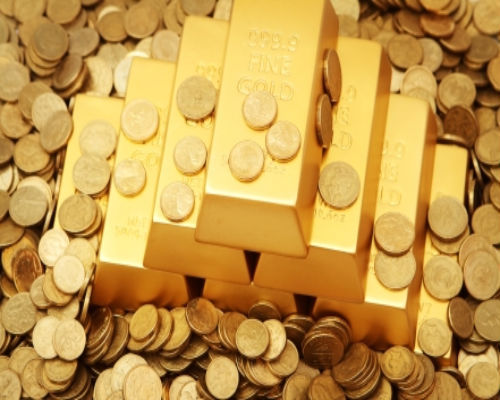
Gold has over the years proved its worth not just in terms of jewellery but also in terms of investment. Considering the run for the metal in the last decade the annualised return on the investment was over 19.5% on an average for each year. Today like most of the commodities even the gold prices are driven by supply and demand as well as speculations in the bullion markets. Gold, like all precious metals, may be used as a hedge against inflation, deflation or currency devaluation.
If the return on bonds, equities and real estate is not adequately compensating for risk and inflation then the demand for gold and other alternative investments such as commodities increases.
As the leaders of the 17 euro nations reached an agreement to tighten budget controls and added 200 billion euros ($267 billion) to a rescue, the euro gained against the dollar, which fell against a basket of major currencies thereby boosting the demand for gold as an alternative investment.
Owning bullions in physical form rather than through the ETFs, is not advisable as there would be significant additional costs for storage, transportation etc.
The exchange-traded fund, or ETF, is a safer form of gold investment than investing in stocks or the mutual funds that own them. Stocks are highly leveraged against the price of gold and thus rise and fall much more than the metal itself. Even with the most precise calculations of gold’s price, one can lose by investing in the mining stocks. ETFs on the other hand are traded on a vast scale providing economies of scale reducing the level of transaction costs as well.
Future Demand
As the demand is surging in emerging markets like India and China, where gold ownership has predominantly been restricted to jewellery, they are now easing barriers against investing in bullion. Even the oil-rich nations are beginning to shift reserves from U.S. dollars to the euro!
The weakening dollar is the reason for gold, a traditional choice for purchasing power, to gain ground. However the increase in gold’s price has been less pronounced in other currencies.
Usually, significant increases in the price of gold bullion are anticipated by gold shares three to six months in advance. Though gold is not a perfect insurance policy since it can be stolen from the owner still it is pretty much immune to the swings of the economy. Paper money is better than floating gold in most deflationary scenarios, and gold is better in most inflationary scenarios. Capital gains taxes might be a problem in an inflationary scenario. However, gold is the only asset that works under virtually all high adverse conditions. Gold holds value in times of uncertainty where your other investments do not. Therefore it is always advisable for the individuals to have a well diversified portfolio of assets having around 10% in the metal.
Considering the fact that fundamentals are in place to push gold to new highs, which include an ever expanding monetary base, fears about future inflation and uncertainty about the European debt crisis, one would think the run would continue. However, considering gold has not had a significant correction in the past decade barring the year of 2008, which corrected but finished slightly up for the year it is not advisable to have a prolonged investment in the metal as no asset class can go up indefinitely and gold is no exception.
Article Source: http://EzineArticles.com/6769182